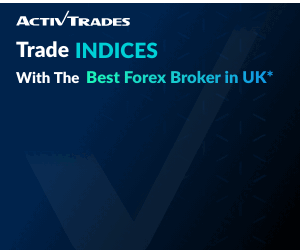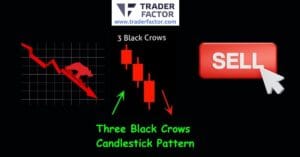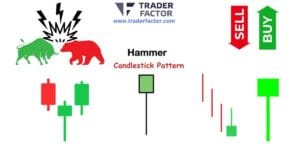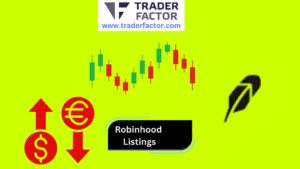The Simple Moving Average (SMA) is one of the most commonly used tools in Forex trading, helping you analyze market trends by smoothing out price data over a set period. It calculates the average closing price of a currency pair over a specific number of days, making it easier to identify patterns and potential entry or exit points. Using SMA, you can spot trends more clearly, even in volatile markets, and gauge the overall market direction. This guide will help you understand how to apply the SMA indicator in Forex trading effectively, so you can make better-informed decisions and manage risk effectively.
Table of Contents
ToggleOverview: Introduction to SMA
What is SMA?
The Simple Moving Average, or SMA, is a technical indicator used to analyze historical price data. It calculates the average of closing prices over a selected number of periods, such as days, hours, or minutes. By smoothing out price fluctuations, SMA helps you focus on the overall trend instead of getting distracted by noise or small, temporary changes in price. A line representing the SMA is typically plotted on a Forex chart to provide a visual cue of where the market is headed. It’s widely used because it’s simple, yet highly effective in trend analysis.

Importance of SMA in Forex
SMA plays a critical role in decision-making for Forex traders. It helps identify market trends, pinpointing whether a currency pair is in an uptrend, downtrend, or a range. For example, when the price is consistently above the SMA line, it signals a potential uptrend. Conversely, prices below the SMA suggest a downtrend. SMA is also crucial for identifying entry and exit points in a trade. When combined with other tools like the Exponential Moving Average (EMA) or oscillators like the RSI, it enhances accuracy in forecasting market movements.
How to Calculate SMA and Understand Time Frames
Simple Moving Average Formula
The formula for calculating SMA is straightforward:
SMA = (Sum of closing prices for ‘n’ periods) / ‘n’, where ‘n’ is the number of periods.
This formula takes the average of the closing prices over the specified time frame. For example, if you want to calculate a 10-day SMA, you add up the closing prices of the last 10 days and divide by 10. The resulting value is then plotted as a point on the chart. Repeat this calculation for each trading day to create the SMA line.
Simple Moving Average Example
Suppose you are trading a currency pair and want to calculate the 5-day SMA. The closing prices for the last 5 days are as follows:
- Day 1: 1.2000
- Day 2: 1.2100
- Day 3: 1.2150
- Day 4: 1.2200
- Day 5: 1.2300
First, sum up these prices (1.2000 + 1.2100 + 1.2150 + 1.2200 + 1.2300 = 6.0750) and divide by 5. The 5-day SMA is 1.2150. Adding this calculation to your chart creates one data point, giving you a clearer sense of the market’s average price trend.
How to Calculate Moving Average in Forex
Calculating moving averages like SMA in Forex is essential because exchange rates often fluctuate due to market speculations, economic changes, and geopolitical events. Using the SMA can help you focus on the bigger picture. Shorter SMA periods (e.g., 10 or 20) are better for quick, reactive trades, while longer periods (e.g., 50, 100, or 200) offer a more stable, broader market assessment. Tools like SMA Forex calculators, available in many trading platforms, simplify the calculations with built-in features.
How to Use and Interpret the Simple Moving Average (SMA) in Forex Trading
The Simple Moving Average (SMA) is an essential tool in Forex trading, providing traders with an easy way to analyze market trends and identify potential trading opportunities. By calculating the average closing price over a specific period, the SMA smooths out market noise and allows you to focus on the bigger picture. Here’s how to effectively use and interpret the SMA for better trading decisions.
Setting Up the SMA on Trading Platforms
SMA Setup Guide for Popular Platforms
Most trading platforms offer built-in indicators like the SMA to simplify technical analysis. To set up the SMA:
- Open your trading platform and load the Forex pair chart you want to analyze.
- Access the indicator menu (often found under “Indicators” or “Add Indicator”).
- Search for “Moving Average” and select the SMA option.
- Configure the settings to match your strategy. For instance, a 50-period SMA is ideal for short- to medium-term analysis, while a 200-period SMA is better for long-term trend spotting.
- Adjust the color and thickness of the SMA line for better visualization on your chart.
This process works similarly across MetaTrader, TradingView, and other platforms, making the SMA indicator accessible and versatile.
Interpreting SMA Signals for Forex Trading
Understanding SMA in Moving Average Analysis
The SMA is calculated using the formula:
SMA = (Sum of closing prices for a selected period) / Number of periods.
For example, with a 10-day SMA for EUR/USD:
- Add the closing prices of the last 10 days.
- Divide the total by 10 to get the SMA value.
This calculation generates a smooth line on the chart, representing the average trend within that time frame.
Using SMA for Trading Signals
The SMA indicator excels in providing simple yet effective trading signals:
- Trend Identification: When the price stays above the SMA, it indicates an uptrend; when below, a downtrend is likely.
- Crossover Signals: When a shorter SMA (e.g., 50-day) crosses above a longer SMA (e.g., 200-day), it creates a bullish signal, known as the “Golden Cross.” When the shorter SMA moves below the longer SMA, it forms a bearish signal, known as the “Death Cross.”
- Dynamic Support and Resistance: The SMA can also act as a guide for support or resistance levels, helping traders estimate price reversal points.
Practical Example for Forex Entry and Exit Points
Imagine you’re analyzing the USD/JPY pair. If the price surpasses the 50-day SMA and stays above it, this suggests bullish momentum, and you may consider entering a buy trade. Conversely, if the price falls below the 200-day SMA and continues downward, it signals bearish momentum, prompting you to exit a long position or enter a short trade.
Tips for Effective Use of the SMA
Combine SMA with Other Tools
While the SMA alone offers valuable insights, combining it with other technical analysis tools enhances your strategy. For example:
- Pair the SMA with Relative Strength Index (RSI) to confirm overbought or oversold conditions.
- Use the SMA alongside Bollinger Bands to predict price volatility.
Optimize SMA Periods Based on Your Trading Strategy
Tailor the SMA settings to your goals:
- Shorter SMAs (e.g., 20 or 50 periods) are ideal for day traders seeking quick signals.
- Longer SMAs (e.g., 200 periods) provide a broader perspective for swing or position traders.
Avoid Overcrowded Charts
Adding multiple SMA lines on a chart can clutter your analysis. Stick to one or two SMA indicators at a time to maintain clarity.
Focus on Major Trends
SMA indicators work best in trending markets. If the market is range-bound or choppy, the SMA may generate false signals. Wait for a clear trend to emerge before relying on SMA signals for significant trade decisions.
Why the SMA is Essential for Forex Market Trends
The SMA simplifies market analysis by highlighting the overall direction of price movements, helping traders spot trends. Its flexibility across various time frames makes it suitable for both new and experienced traders. By integrating the SMA indicator into your Forex trading strategy, you can better time your trades and make more informed decisions.
Mastering the use of the SMA will elevate your technical analysis tools arsenal, giving you an edge in navigating Forex market trends. Practice using it on trading platforms and experiment with different time frames to create strategies that align with your trading style. With discipline and continued exploration, the SMA can become a reliable guide for making strategic entry and exit decisions in Forex trading.
Setting Up SMA on Popular Trading Platforms
How to Set Moving Average in MT5
MetaTrader 5 (MT5) is one of the most popular platforms among Forex traders. Setting up SMA in MT5 is quick:
- Open your chart and select the currency pair.
- Right-click the chart and select “Indicators list.”
- Choose “Moving Average.”
- Enter the period (such as 50 for a 50-day SMA) and select the “Simple” moving average type.
- Apply the settings, and the SMA line will appear on your chart.

Setting Up SMA in MetaTrader 4
Setting up SMA in MetaTrader 4 is similar:
- Launch the platform and go to your trading chart.
- Click on the “Insert” menu and select “Indicators.”
- Navigate to “Trend” and select “Moving Average.”
- Configure the period and type as “Simple,” choose a color for your SMA line, and click “OK.”
Setting Up SMA in TradingView
To set up SMA in TradingView:
- Click the “Indicators” tab at the top of your screen.
- Search for “Moving Average” and select it.
- Customize the length based on your chosen period (e.g., 20 or 50).
- Apply the settings, and the SMA line will appear, ready for your analysis.
Interpreting SMA Signals
Forex Moving Average Crossover Strategy
One popular strategy is using SMA for crossovers:
- Golden Cross occurs when a short-term SMA (e.g., 50-day) crosses above a long-term SMA (e.g., 200-day), signaling a bullish market.
- Death Cross happens when a short-term SMA crosses below a long-term SMA, indicating bearishness.
Popular Simple Moving Average (SMA) Strategies in Forex Trading

The Simple Moving Average (SMA) is a powerful and versatile tool in Forex trading. Its simplicity allows traders of all levels to use it effectively, while its adaptability makes it a core component in many trading strategies. Let’s explore three popular SMA strategies—crossover, trend-following, and dynamic support and resistance—that traders use to predict market movements and make smarter trading decisions.
1. The Crossover Strategy
How It Works
The SMA crossover strategy is one of the most widely used approaches in Forex trading. It involves two SMA lines, a short-term SMA (e.g., 50-period) and a long-term SMA (e.g., 200-period). When the short-term SMA crosses above the long-term SMA, it signals a bullish move, which means it’s time to buy. Conversely, when the short-term SMA crosses below the long-term SMA, it indicates bearish momentum and a potential selling opportunity.
Setup Process
- Add two SMA indicators to your chart.
- Set one SMA to a shorter period, such as 50.
- Set the other SMA to a longer period, such as 200.
- Watch for crossover points where the lines intersect.

Practical Example
Suppose you’re analyzing the EUR/USD pair. If the 50-period SMA crosses above the 200-period SMA, it indicates the pair is entering a bullish phase. You might consider initiating a buy trade. Alternatively, if the 50-period SMA crosses below the 200-period SMA, you can prepare for a sell trade.
Tips for Success
- Combine the crossover strategy with volume indicators to confirm momentum.
- Use stop-loss and take-profit levels to manage risk effectively.

2. The Trend-Following Strategy
How It Works
This strategy helps traders identify and follow the market trend. By analyzing the position of the SMA relative to the price action, you can determine the overall market direction. If the price consistently trades above the SMA, the market is in an uptrend. If it trades below, the market is in a downtrend.
Setup Process
- Apply an SMA to your chart, typically a 100-period or 200-period SMA for trend-following.
- Observe the price action relative to the SMA line.
- Trade in the direction of the trend (buy in an uptrend, sell in a downtrend).
Practical Example
Imagine trading the GBP/USD pair, and the price remains above the 100-day SMA for an extended period. This trend suggests sustained bullish momentum, and you may focus on buying opportunities. Alternatively, if the price stays below the SMA, look for selling opportunities in the current bearish trend.

Tips for Success
- Avoid trend-following strategies in range-bound markets, as they can lead to false signals.
- Use additional indicators, such as the Average Directional Index (ADX), to confirm trend strength.
3. Dynamic Support and Resistance Strategy
How It Works
The SMA can act as dynamic support and resistance levels in the Forex market. When the price approaches an SMA, it often bounces off the line rather than crossing it. This behavior allows traders to forecast reversals or continuations in price movements.

Setup Process
- Apply a medium-term SMA (e.g., 50-period) to your chart.
- Look for instances where the price approaches and reacts to the SMA line.
- Use these points to set entry and exit levels.
Practical Example
While trading the USD/JPY pair, you notice that the 50-day SMA is acting as support. Each time the price approaches the SMA, it bounces back up. This pattern suggests a strong support level, and you could place a buy order near the SMA line. On the flip side, if the price frequently reverses downward after touching the SMA from below, it may serve as a resistance level, signaling potential sell opportunities.
Combining SMA with Other Indicators
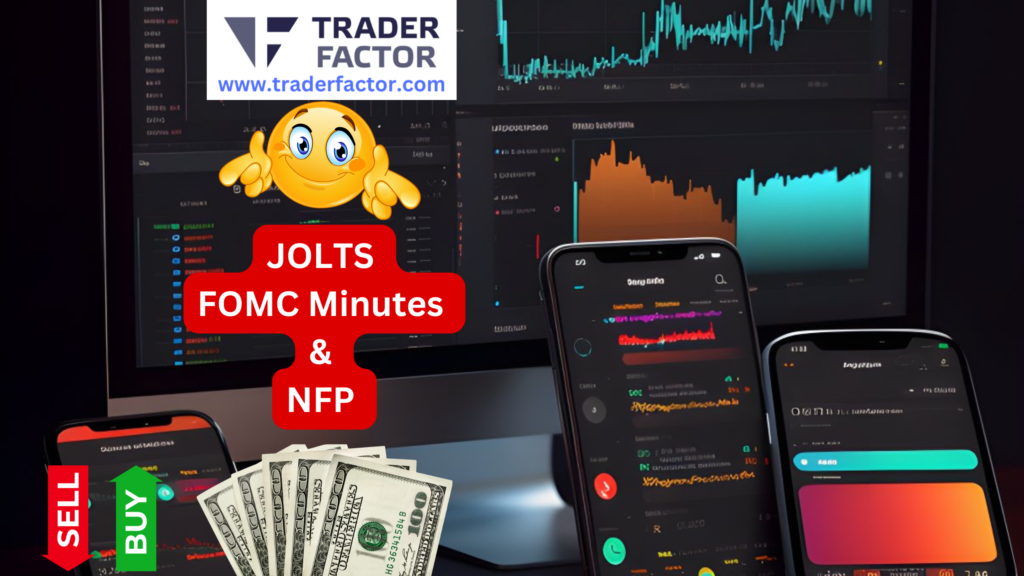
EMA Forex
The Exponential Moving Average (EMA) is another type of moving average that gives more weight to recent price data. Combining SMA with EMA enhances your strategy, for instance, use EMA to detect short-term trends and SMA to confirm the broader trend.
Sma Forex Strategy
A simple way to build an SMA Forex strategy is by combining the SMA with oscillators like RSI or Bollinger Bands. For example, if RSI confirms an overbought condition in an uptrend identified by SMA, you might prepare to exit your long position.
Common Mistakes to Avoid When Using SMA

Sma Forex Example and Calculator
One common mistake is misinterpreting SMA signals. For example, seeing an SMA crossover and acting impulsively can result in losses if market conditions don’t align. Use tools like a SMA Forex calculator to ensure your analysis is precise.
Sma Forex Chart and Overcomplicating Analysis
Avoid overcrowding your SMA Forex chart with multiple SMA lines of varying periods. Focused charts allow you to make informed, clear decisions, maximizing the strategy’s effectiveness.
Frequently Asked Questions

How do you use SMA as an indicator?
To use SMA, you calculate the average closing price of an asset over a specific period and plot it as a line on your trading chart. This line helps identify trends by smoothing out short-term price fluctuations. Traders use it to spot trend directions, potential reversals, and support or resistance levels.
Which SMA is best for trading?
The best SMA depends on your trading style. Short-term traders may prefer a 20-period SMA for quick signals, while long-term traders often use a 50 or 200-period SMA to spot larger trends. Test different settings to see what works best for your strategy.
What is SMA 20 and SMA 50?
The SMA 20 calculates the average price over the last 20 periods, reflecting short-term trends. The SMA 50 averages the last 50 periods, offering insights into medium-term price movements. Comparing the two can help traders spot trend shifts or confirm a trend’s strength.

What is the 8-13-21-55 EMA strategy?
This strategy uses exponential moving averages (EMAs) to identify trends and entry/exit points. Traders watch for crossings of these EMAs to determine momentum shifts, set up trades, or confirm entries and exits. It’s more dynamic than SMAs and better suited for faster market conditions.
What is the formula for SMA in Forex?
The formula for SMA is the sum of closing prices over a specified number of periods divided by that number of periods. For example, for a 10-period SMA, you add the closing prices of the last 10 periods and divide by 10. The result is plotted as a line on the chart.
How to read 50 and 200-day moving averages?
The 50-day moving average shows short-term market trends, while the 200-day moving average reflects long-term trends. When the 50-day MA crosses above the 200-day MA, it signals a bullish market. Conversely, a downward cross indicates bearish momentum.

Is EMA or SMA better for Forex?
EMAs are better for fast-paced markets as they give more weight to recent price data, making them more responsive to price changes. SMAs are ideal for identifying longer-term trends as they smooth out price action evenly. Your choice depends on whether you prioritize quick reactions or stable signals.
What are the best SMA settings for day trading?
Day traders often use shorter settings like the 10, 20, or 50-period SMA for quick trend identification. These settings help capture intraday price movements and provide timely trading signals. Adjust the settings based on the asset’s volatility and your preferred time frame.
Which MA is best for swing trading?
The 50-day and 100-day moving averages are commonly used for swing trading to identify medium-term trends. They help traders pinpoint key reversals and confirm ongoing trends. Combining these with other indicators can improve accuracy.

How to use SMA in Forex trading?
To use SMA in Forex trading, overlay the SMA on your chart and observe its alignment with price action. A price crossing above the SMA suggests a possible buy signal, while crossing below it indicates a sell signal. Combine it with other tools for confirmation.
What SMA is best for trend?
The 200-period SMA is considered one of the most reliable for identifying long-term trends. It helps traders stay aligned with the broader market direction. Shorter SMAs, like the 50-period, are also useful for confirming current trends.
Which moving average is best for scalping?
Scalpers often use short-term EMAs like the 9-period or 21-period to react quickly to price changes. These capture small, frequent price movements ideal for quick trades. Pairing them with trend and momentum indicators improves decision-making.

Which moving average is best for trading gold?
For gold trading, the 50-period and 200-period SMAs are widely used as they highlight medium- and long-term trends. Add shorter-term MAs like the 20-period for identifying entry points. Gold’s volatility often requires additional confirmation indicators.
Which indicator is best for entry and exit?
Moving average crossovers are popular indicators for entry and exit in Forex. For example, the crossing of a short-term SMA above a long-term SMA signals entry, while the reverse indicates exit. Combine with volume or momentum indicators for precision.
How can you get rich swing trading?
To succeed in swing trading, focus on consistent gains rather than chasing profits. Use tools like moving averages to identify trends, set realistic targets, and manage risks effectively. Success comes from discipline, market knowledge, and adherence to your trading plan.
Which moving average indicator is best?
There’s no single best moving average; it depends on your trading style. SMAs are better for identifying broader trends, while EMAs react faster to price changes. Most traders use a combination to balance accuracy and responsiveness.

How to identify a trend with a moving average?
A trend is identified by the price’s position relative to the moving average. If the price remains above the MA, it’s an uptrend; if it’s below, it’s a downtrend. The slope of the MA also visually confirms the trend’s direction.
How do you use the smart money index indicator?
The Smart Money Index (SMI) tracks the behavior of institutional investors. Combine it with moving averages to align your trades with major market participants. Use SMI values to confirm or refine your entries and exits.
How to use SMA indicator in TradingView?
On TradingView, add the SMA indicator from the tools menu, input your desired period, and apply it to your chart. Observe price interactions with the SMA to identify trends and trading signals. Customize the settings to suit your trading strategy.
Conclusion
Mastering the Simple Moving Average (SMA) gives you the edge to analyze trends and make smart trading decisions. By understanding its strategies, settings, and comparisons with other tools, you’ll boost your trading skills.
Disclaimer:
All information has been prepared by TraderFactor or partners. The information does not contain a record of TraderFactor or partner’s prices or an offer of or solicitation for a transaction in any financial instrument. No representation or warranty is given as to the accuracy or completeness of this information. Any material provided does not have regard to the specific investment objective and financial situation of any person who may read it. Past performance is not a reliable indicator of future performance.







